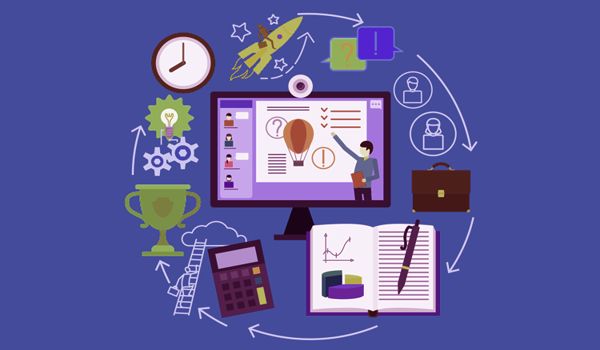The way professors teach students in higher education has changed as a result of technological advancements. Students, for example, can refer to a digital copy of the topics discussed in class by uploading recorded lectures online. However, traditional lecture-based teaching has traditionally treated students solely as information consumers, with little room for student creativity or interaction.
Researchers at the University of Missouri have discovered that activity-based learning, as opposed to lecture-based learning, improves student creativity and learning by allowing students to use technology to develop their own original ideas.
Isa Jahnke, associate professor in the MU College of Education’s School of Information Science and Learning Technologies, worked with former doctoral student Julia Liebscher to investigate how European higher education professors use mobile technology in their classrooms. She discovered that professors who allowed their students to use technology in a team setting to come up with a novel product or idea boosted student creativity the most.
Technology has shifted the way that professors teach students in higher education. For example, by uploading recorded lectures online, students can reference a digital copy of the topics discussed in class. However, lecture-based teaching traditionally leaves students as consumers of information solely with little room for student creativity or interaction.
Colleges and universities have been quick to adopt new technologies, often before their educational value has been proven. Higher education has experimented with technological advances as diverse as the blackboard and the personal computer throughout its history. Some technologies have become indispensible components of the higher education enterprise. Others, such as the slide rule and the 16-millimeter movie projector, have been phased out in favor of more sophisticated or cost-effective technologies.
For example, one group of history students created an app that virtually teaches users about the history of the Berlin Wall. Rather than simply lecturing the material to the students, Jahnke discovered that allowing them to use technology collaboratively increased their creativity and understanding of the material.

Despite the promise of technology, its adoption in higher education has been slow and painful. Within colleges and universities, there are numerous barriers to technological innovation. Many professors are hesitant to adopt alternative instructional strategies that use computers or telecommunication devices because of academic traditions such as a faculty-centered lectures. Many technological applications are also prohibitively expensive, making them difficult to implement in many resource-constrained institutions. Before technology became such an integral part of institutional operations, many colleges purchased new or improved technologies with funds left over at the end of their fiscal year. Now that technology has become an essential and recurring investment, most schools must locate additional funds to meet their increasing needs for technology resources.
“This research will help professors reconsider how they design their existing courses,” Jahnke said. “We need to move away from purely lecture-based learning, in which students are simply consumers of information, and toward a more meaningful learning approach with technology, in which students can come up with creative and novel solutions in a team setting.”
Jahnke also mentioned that MU has resources, such as the Teaching For Learning Center, to assist professors in rethinking their course designs in the face of an ever-changing educational landscape.
“If we have universities that produce more creative-thinking students, we will have more people who can help come up with solutions to all of society’s grand challenges,” Jahnke said. “Creativity will lead to better innovators, entrepreneurs, and business owners, but first we must ask ourselves as educators if we are putting our students in positions to be creative in the first place.”
It is no secret that traditional textbooks are unappealing to students. Students in the twenty-first century literally carry the world into their classrooms in their hands. Their handheld devices research, communicate, and connect far beyond the confines of the school. Teachers use similar technology to take students on field trips around the world. Because of simulations and virtual reality, the logistics of scheduling and paying for academic excursions are no longer an issue. Digital field trips, science experiments, and even historical expeditions supplement curriculum in ways that a textbook could never.















